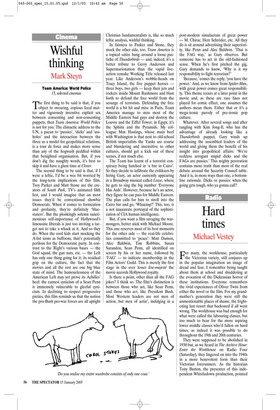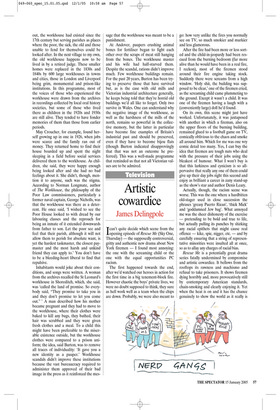Hard times
Michael Vestey
For many, the workhouse, particularly the Victorian variety, still conjures up in the popular imagination an image of dread and fear. I remember being taught about them at school and shuddering at the evocation of the Dickensian horror of these institutions. Everyone remembers the vivid experiences of Oliver Twist from either the novel or the film. For my grandmother’s generation they were still the unmentionable places of shame, the frightening last resort that beckoned if all went wrong. The workhouse was bad enough for what were called the labouring classes, but too much to bear for the more aspiring lower middle classes who’d fallen on hard times, as indeed it was possible to do throughout the 19th and 20th centuries.
They were supposed to be abolished in 1930 but, as we heard in The Archive Hour: Enter the Workhouse on Radio Four (Saturday), they lingered on into the 1940s in a more benevolent form than their Victorian forerunners. As the historian Tony Burton, the presenter of this independent Whistledown production, pointed out, the workhouse had existed since the 17th century but serving parishes as places where the poor, the sick, the old and those unable to fend for themselves could be looked after. In the next village to my own, the old workhouse happens now to be lived in by a retired judge. These smaller homes were replaced in the 1830s and 1840s by 600 large workhouses in towns and cities, those in London and Liverpool being grim, monumental and prison-like institutions. In this programme, most of the voices of those who experienced the workhouse were drawn from the archives in recordings collected by local oral history societies, but some of those who lived there as children in the 1920s and 1930s are still alive. They tended to have fonder memories of them than those from earlier periods.
May Croucher, for example, found herself growing up in one in 1926, when jobs were scarce and the family ran out of money. They returned home to find their house boarded up and spent the night sleeping in a field before social services delivered them to the workhouse. As children, she said, they were happy enough being looked after and she had no bad feelings about it. She didn’t, though, mention it to anyone, such was the stigma. According to Norman Longmate, author of The Workhouse, the philosophy of the Poor Law commissioners, particularly a former naval captain, George Nicholls, was that the workhouse was there as a deterrent. He once said, ‘I wished to see the Poor House looked to with dread by our labouring classes and the reproach for being an inmate of it extended downwards from father to son. Let the poor see and feel that their parish, although it will not allow them to perish for absolute want, is yet the hardest taskmaster, the closest paymaster and the most harsh and unkind friend they can apply to.’ You don’t have to be a bleeding-heart liberal to find that repulsive.
Inhabitants would joke about their conditions, and songs were written. A woman from the archives recalled the St Leonard’s workhouse in Shoreditch, which, she said, was ‘called the land of promise. So everybody said, “They promise to take you in and they don’t promise to let you come out.” ’ A man described how his mother became pregnant and they had to move to the workhouse, where their clothes were baked to kill any bugs, they bathed, their hair was scrubbed and they were given fresh clothes and a meal. To a child this might have been preferable to the miserable existence outside, but the workhouse clothes were compared to a prison uniform; the idea, said Burton, was to remove all traces of individuality: ‘It gave you a new identity as a pauper.’ Workhouse scandals didn’t improve these institutions because the vast bureaucracy required to administer them approved of their bad image in the press as it reinforced the mes sage that the workhouse was meant to be a punishment.
At Andover, paupers crushing animal bones for fertiliser began to fight each other over the scraps of meat still hanging from the bones. The workhouse master and his wife had half-starved them. Despite the scandal, rations didn’t improve much. Few workhouse buildings remain. For the past 20 years, Burton has been trying to preserve those that have survived but, as is the case with old mills and Victorian industrial architecture generally, he keeps being told that they’re horrid old buildings we’d all like to forget. Only two survive in Wales. One can understand why the negative image of the workhouse, as well as the harshness of the mills of the north, remains so powerful in the collective memory, but the latter in particular have become fine examples of Britain’s industrial past and should be preserved, even if they have to become bijou flats (though Burton indicated disapprovingly that that was not an outcome he preferred). This was a well-made programme that reminded us that not all Victorian values are to be admired.






















































 Previous page
Previous page